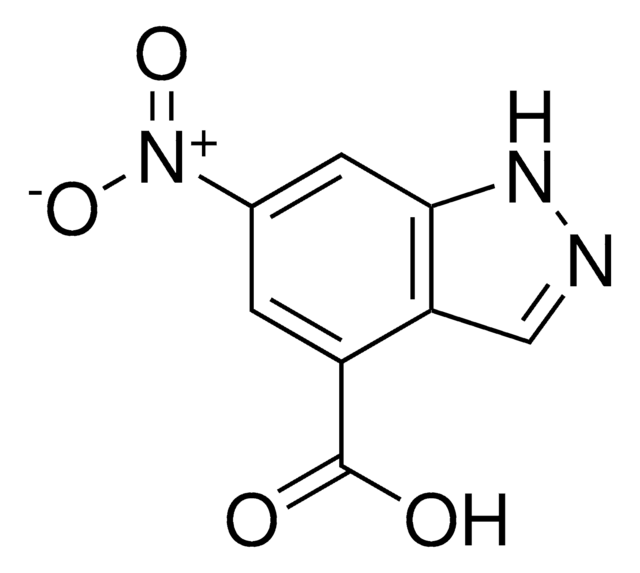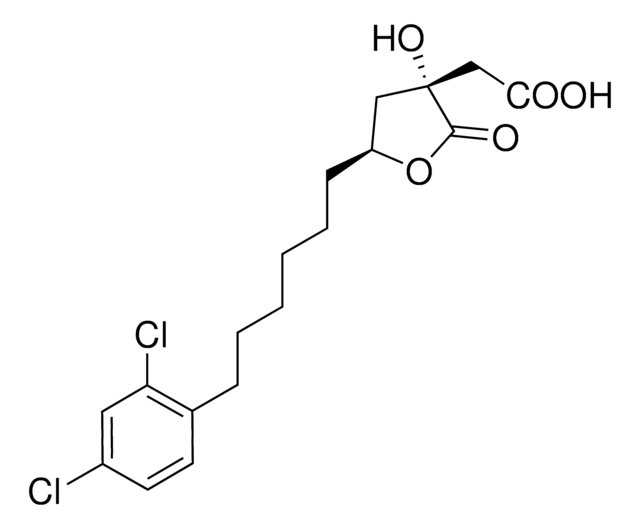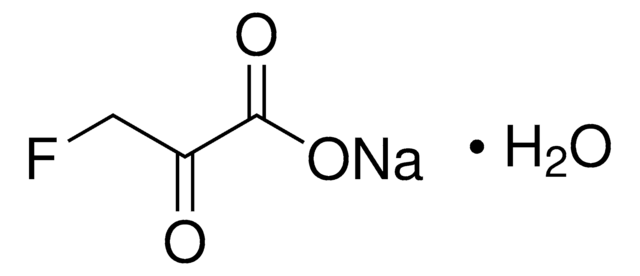SML3650
CTPI-2
≥98% (HPLC)
Synonim(y):
2-(4-Chloro-3-nitrobenzenesulfonamido)benzoic acid, 2-[[(4-Chloro-3-nitrophenyl)sulfonyl]amino]benzoic acid, CTPI 2, CTPI2
Zaloguj sięWyświetlanie cen organizacyjnych i kontraktowych
About This Item
Wzór empiryczny (zapis Hilla):
C13H9ClN2O6S
Numer CAS:
Masa cząsteczkowa:
356.74
Numer MDL:
Kod UNSPSC:
12352200
NACRES:
NA.25
Polecane produkty
Poziom jakości
Próba
≥98% (HPLC)
Postać
powder
kolor
white to beige
rozpuszczalność
DMSO: 2 mg/mL, clear
temp. przechowywania
2-8°C
Działania biochem./fizjol.
CTPI-2 is a selective mitochondrial citrate transporter (SLC25A1) inhibitor that displays H1299 anti-proliferation activity in a SLC25A1-dependent manner (IC50 <10 μM). When compared with CTPI-1, CTPI-2 exhibits 20-fold higher target affinity (hSLC25A1 KD = 3.5 μM vs. 63.6 μM, respectively) and is ~1000-fold more potent against H1299 sphere-forming capacity. CTPI-2 inhibits mitochondrial respiration and formation of patient NSCLC tumors-derived CSCs spheres in cultures (10-50 μM), as well as suppresses the growth of patent-derived NSCLC exnografts in mice in vivo (28 mg/kg q.o.d. i.p.).
This page may contain text that has been machine translated.
Kod klasy składowania
11 - Combustible Solids
Klasa zagrożenia wodnego (WGK)
WGK 3
Temperatura zapłonu (°F)
Not applicable
Temperatura zapłonu (°C)
Not applicable
Certyfikaty analizy (CoA)
Poszukaj Certyfikaty analizy (CoA), wpisując numer partii/serii produktów. Numery serii i partii można znaleźć na etykiecie produktu po słowach „seria” lub „partia”.
Masz już ten produkt?
Dokumenty związane z niedawno zakupionymi produktami zostały zamieszczone w Bibliotece dokumentów.
Terumasa Umemoto et al.
The EMBO journal, 41(8), e109463-e109463 (2022-03-02)
In order to support bone marrow regeneration after myeloablation, hematopoietic stem cells (HSCs) actively divide to provide both stem and progenitor cells. However, the mechanisms regulating HSC function and cell fate choice during hematopoietic recovery remain unclear. We herein provide
Harvey R Fernandez et al.
Cell death and differentiation, 25(7), 1239-1258 (2018-04-14)
Therapy resistance represents a clinical challenge for advanced non-small cell lung cancer (NSCLC), which still remains an incurable disease. There is growing evidence that cancer-initiating or cancer stem cells (CSCs) provide a reservoir of slow-growing dormant populations of cells with
Kexu Xiang et al.
Cell death & disease, 13(7), 641-641 (2022-07-23)
Oncogenic mutations in metabolic genes and associated oncometabolite accumulation support cancer progression but can also restrict cellular functions needed to cope with DNA damage. For example, gain-of-function mutations in isocitrate dehydrogenase (IDH) and the resulting accumulation of the oncometabolite D-2-hydroxyglutarate
Nasz zespół naukowców ma doświadczenie we wszystkich obszarach badań, w tym w naukach przyrodniczych, materiałoznawstwie, syntezie chemicznej, chromatografii, analityce i wielu innych dziedzinach.
Skontaktuj się z zespołem ds. pomocy technicznej







